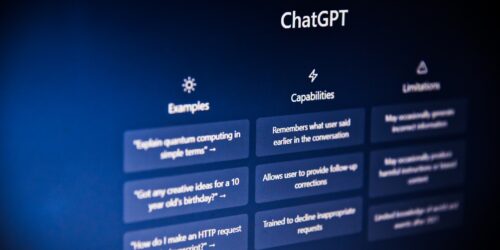
AI-Adapting Activities and Assesments: Part 2 of 2
This is the second of two posts about AI-adapting activities and assignments. While Part 1 of this post series describes ways to adapt to restrict or minimize AI use, this post considers how AI-adapt assessments so that AI use will further students’ learning while promoting responsible and transparent use of AI.
Why Encourage (Wise) AI Use by Students
Forbes and Brandauer (2023) describe a range of approaches to student AI use. For less restrictive approaches, described as conditional or open, AI is perceived to support and enhance student learning. With an open approach, students have more choices in what and how they wish to use AI to achieve their learning goals. Learning goals are designed to incorporate AI collaboration or aid in these cases.
Restricted/Conditional: There may be occasional or limited use (such as using assistive AI only). The decision is up to individuals. For example, the Health Informatics program introduces students to the power of AI in healthcare. In a patient data analysis project, students utilize AI algorithms to identify patterns in medical records, assisting in diagnosis and treatment recommendations. Students are not permitted to use generative AI; however, they are permitted to use Grammarly when drafting treatment recommendations. Students are required to indicate if they used Grammarly for the assignment.
Open: AI will likely be incorporated into the field, and the program or course has discussed AI use. AI tools may be used as individuals see fit. For example, in an Applied Artificial Intelligence & Machine Learning program, students are immersed in practical AI development. Students collaborate on a natural language processing project, building chatbots using AI models that understand and respond to user queries. Students must use AI and provide examples (screenshots) of its use. This hands-on experience learning about and working with AI prepares students for machine learning and automation careers.
If you take a conditional or open approach, you are open to having students use AI to aid their learning or enhance the final learning product to achieve the learning goals of your course. For more information, see the related post, The Optional Use of GenAI in Assessments.
Adapting Activities and Assignments to Use AI to Aid Learning
To guide students to use AI in ways that aid and support their learning, you may wish to: 1. Identify the role of AI, 2. Determine when AI may be used (and when it should not be used), and 3. Describe your expectations for students to document AI use.
1. Identify the role of AI
Ouyang and Jiao (2021) describe that AI can play different roles in student learning. The way faculty think about how they want students to use AI can shape their expectations and instructions for students as they plan to AI-adapt their assessments.
AI-directed, learner as recipient
AI demonstrates outcomes on behalf of the learner. For activities and assignments that assess human capabilities, this category might be used to explain to students how they should not seek to use AI. For example, an accounting student uses an AI-powered tool at the School of Business to automatically generate financial statements. The student relies on the AI to complete assignments without fully understanding the underlying concepts.
AI-supported, learner as a collaborator
AI collaborates to support human learning, and the student uses AI as a partner in education. The AI may be used as a learning tool or learning partner for this role. When AI is used as a collaborator, the student is likely to learn from and with the AI to achieve learning goals. Reverse prompting, or using AI for tutoring or coaching, may provide supportive AI collaboration.
For example, In the School of Engineering, a mechanical engineering student collaborates with an AI system to optimize a complex design. The student actively engages with the AI, seeking insights and refining their project based on the AI’s recommendations.
AI-empowered learner as a leader
Learners can “do more” with the help of AI, as students can partner with AI or become empowered by AI. For this role, AI is used as a support or an aid. When the student takes the lead in using AI, they may use it as a prompting or “answer” tool at the beginning of their work to “brainstorm” or to check/proof their work at the end.
For example, a nursing student could be asked to use AI-driven predictive models to identify patients at risk of complications. The student takes the lead in interpreting the AI’s predictions, but they would only use the predictions to tailor and communicate the plan to the patient.
By clarifying for students the role that AI will play in their assignments, students may be more likely to recognize how their abilities and the capabilities of AI are complementary. See this post by Barnum (2023) that describes various levels of AI Assistance in Student Assignments as “low, medium, and high.”
2. Identify when AI may be used to aid learning
Help students use AI strategically by determining what role they would like AI to play and how the AI will further their learning. The goal is to help students use AI in ways that not only give the answers but also build knowledge. The expectations and documentation required of students for the assessment include guidelines on when to use AI and not to use AI as a “shortcut,” how AI was used, and other documentation. There are also opt-outs and alternatives (see the Evolving AI Guidelines).
If you ask students to complete a research and presentation assessment, you may wish to describe at which point you encourage students to use AI in the assessment development process and “how much” students should use AI to further their learning.
To gain ideas about at what stage in a learning activity or lesson plan you may wish to guide students to use AI, see the Hub post, Start, Continue, or End Learning with AI.
3. Describe and document how students should show their learning
When students collaborate or use AI as a learning aid, it becomes important to determine how they use AI to support (rather than replace) their learning. Such a description and/or documentation can capture and make the learning process transparent with AI.
What should students document? They can describe what AI was used or not used for certain learning tasks, when in the learning process it was used, what it was used for, what ideas were adopted or rejected, where AI seemed to be useful and where it seemed to “go wrong.”
How and where should students document? They can copy and paste prompts created by students, outputs created by AI, summaries of conversations provided by AI, reflections they have on their own or in a group, and screenshots of conversations.
Such a documentation process expands on citing and referencing AI outputs, which should also be used to promote academic integrity. To learn more, see the Hub post Describe and Document AI Use.
Practical Example: AI Use to Support a Current Events Assignment
The course Integrated Logistics in the Supply Chain (TRAN2000) provides a low-stakes in-class activity and assignment to look up, assess, and present a current logistics or supply chain management event in the media (available on the Internet). The instructions are to find and summarize an article, then describe the impact of business logistics on the stakeholders in the example, relating ideas to the course.
Below are two options for adapting the assignment for student use. These options highlight how and when AI should be used and what documentation should be provided to demonstrate learning.
| Type of Use | What AI is Allowed | At What Point the AI Should Be Used | When the AI Should Not Be Used | Documentation Recommendations for Students |
|---|---|---|---|---|
| “Conditional” – some but limited use of AI | You may use Copilot to help you find and summarize an article on a current event in logistics or supply chain management event. Remember that the AI is only a tool to assist you, not to replace your own analysis and understanding. | Please use AI initially to help you find relevant articles and summarize their content. | When you submit your assignment, include a section documenting your use of AI. This should include a screenshot of what Copilot suggested and a rationale for why you chose the article you did. Include the summary the AI provided and your reflections on how accurate you felt the summary was. | When you submit your assignment, please include a section documenting your use of AI. This should include a screenshot of the options that Copilot selected for you and a rationale for why you chose the article you did. Please include the summary that the AI provided for you and any reflections on how accurate you felt the summary was. |
| “Open” – free use of AI | You may use AI when you find it helpful in the assignment. This could be at the beginning to find and summarize articles, during the analysis phase to generate insights, or at the end to check your work and generate your presentation. | As you use AI, please document your use. Include screenshots of the AI tool, describe how it aided your process, and reflect on its effectiveness. Also, note any instances where the AI tool made a mistake or misunderstood your instructions. | You may use AI when you find it helpful in the assignment. This could be at the beginning to find and summarize articles, during the analysis phase to generate insights, or at the end to check your work and generate your presentation. | When you submit your assignment, please include a section documenting your use of AI. This should include a screenshot of the options that Copilot selected for you and a rationale for why you chose the article you did. Please include the summary the AI provided for you and any reflections on how accurate you felt the summary was. |
See this faculty story by Anita Nickerson about how AI is used to support learning in her class: Embedding AI in Activities and Assessments: A “5 for 1” Deal.
Summary
Learning goals should always guide the scope of permissible/non-permissible AI use. Given the capabilities of AI, students should only be permitted to use AI when they can be assessed on the human capabilities they develop through AI-supported learning activities (Oregon State University Ecampus, 2023).
AI adapting assignments for conditional or open use requires a greater focus on the learning process, not just the product of learning. Clear guidelines are crucial so that students know how AI may support, not replace, their learning.
References:
Barnum, B. (2023). AI assistance in student assignments. X Twitter.
Forbes, M., & Brandauer J. “What’s my stance on genAI in this class?” Gettysburg College Johnson Center for Teaching and Learning.
Ouyang, F. &, Jiao, P. (2021). Artificial intelligence in education: The three paradigms. Computers and Education: Artificial Intelligence, 2, 1-6.
Oregon State University Ecampus. Bloom’s Taxonomy Revisited. CC by 4.0









